Many owners of country sites are trying to grow not only vegetable and fruit cultures, but also various colors. After all, breaking flower beds is possible not only to improve the appearance of its plot, but also to give a lot of positive emotions to all residents and guests of a country house. The most unusual cultures that are grown in the country areas include Eremurus Flower. This beautiful and original plant can decorate any flower bed, adding bright paints into it. Read more about the characteristics of this culture, as well as how the cultivation of Eremeruus is performed correctly - we will tell further.
Characteristics of Eremurus
Eremurus refers to the long-term plants of the kind of xanutorreyevye, the subsample of asphodella. This culture was withdrawn for the first time in the 19th century. Today, a plant is especially popular in the territory of Western Europe and Russia. There are about 50 varieties of plants, including hybrid views.
The main characteristics of the culture:
- Stem durable and long. Some varieties of culture are considered fairly high, 140 cm reached in height.
- The root system is represented by the main rhizome and branches from it, on the form resembling a "starfish". The size of the rhizomes is 10-14 cm.
- The plant has many leaves, the size and forms of which varies depending on the variety of eremurus. So, leaflets may have a linear, cylindrical, cylinder form. In shape, they are found both narrow and wide.
- Plant flowers most often have a bell shape. They are located on the spirals.
- Flowers culture with red, pink, yellow or brown flowers. Coloring varies depending on the variety of culture.
- Flowering culture is short. The average life of a "life" of one flower reaches 2 weeks.
- Seeds of culture are contained in spherical boxes.
- Eremurus is a good honey. If the weather is favorable, warm and important, then the culture allocates odorous nectar. In addition, there is a glue that is collected by bees. Honey turns out golden color and has a pleasant smell. From one hectare of Eremurus, the bee collect nectar at 150 kg of honey.
Flower Eremurus has several additional names, among which shryly and shry. These words occur from the Asian word "glue", because of the roots of this culture, the inhabitants of Central Asia mined the adhesive used for technical purposes. In addition, this culture and among Asian drugs are popular, which used adhesive substance obtained from plant roots for the manufacture of medical plasters. The familiar name "Eremurus" happened to us from the Greek words "Tail" and "Desert". And it is not surprising, after all, looking at the appearance of the culture, it becomes clear why it is so named. The eremurus flower itself has an oblong elongated shape, decorated with fluffy blooms - from far it may seem that the brushes of the plants are reminded in the form of a horse tail.
Growing and reproduction of Eremurus
Most often, the cultivation of Eremurus is carried out in three ways:
- with the help of seeds,
- enforced method
- vegetative way.
Flowers give preference to cultivation of culture with a seedy method. Buy the Ereurus planting material in flower shops or to assemble it from seed boxes after flowering culture. Seeding seeds of culture is held in March. After the appearance of the sprouts, they are planted into the ground at a distance of 50 cm apart.
The procedure for preparing seedlings Next:
- Seize culture for seedlings at the beginning of autumn. For this, containers are a depth of 20 cm.
- Each seed of culture is plunged into the landing soil for 1-2 cm. From above, the seeds of Eremurus are sprinkled with a layer of land. In the container, the landing material is stored before the onset of spring.
- In March, the first sprouts appear. It should be remembered that for the first year not all planted seeds will come, but because of this, they should not be taken out of the container, because sprouts can proceed the next year.
- Sprouts should be watered in a timely manner, much more often than adult flowers.
At the time of the onset of cold plants can be transferred to containers with soil and cover the layer of leaves. The thickness of the protective layer should be at least 25 cm. It is possible to remove dry leaves in the middle of spring.
As for the vegetative breeding method, it is resorted to it in March:
- This uses healthy culture shoots. So, if you notice that several small outlets appeared near the main plant, then it means that they had taken root and rooted. They are carefully separated from the main plant without damaging the rhizome.
- Spawns are treated with ash solution.
- Then child sockets are planted into the soil. It should be remembered that the reproduction of the vegetative way is not available more often than once every 5 years.
Next, we consider how the Eremurus and care in the open soil is being landed.
Landing Eremeruus to Open Ground
Cultural landing conditions:
- Seedling landing is carried out at the beginning of autumn. For this, a suitable plot is selected, which in sufficient quantities come with sun rays.
- As for wind and drafts, the culture is stable to them, since the stems of Ereurus are pretty durable and high.
- The soil on the plot should be well drained, as the plants are afraid of stagnation and the re-fulfillment of moisture.
- Eremurus itself refers to unpretentious cultures. However, the best germination of the plant is observed on alkaline or neutral soils.
Order of the landing of Eremeruus:
- First of all, it is necessary to prepare a plot for planting culture. If at the selected part of the flower beds does not have good water permeability, then drainage should be equipped. It uses crushed stone, pebbles or gravel.
- The drainage layer falls asleep a fertile soil. The thickness of the fertile soil layer should be about 50 cm. As mentioned above, the plant prefers weakly alkaline and neutral types of soil.
- The selected area is enriched with compost or humus.
- For the sprout, a hole is digging a depth of 30 cm. The seedlings are transplanted from the container very carefully so as not to damage the root system. It is best to plant a sprout along with a land lump near the root.
- In the landing fossa, it neatly spread all branches of the root of the plant. Then they fall asleep the root layer of fertile soil.
- The distance between the seedlings should be about 40-50 cm. If we are talking about large royal culture varieties, such sprouts should be planted at a distance of 60 cm.
- Saplings after landing watered. The appearance of Ereurus flowers can only be observed for 4-5 years, after planting seedlings.
Schedule of planting culture, depending on the variety of Eremeruus:
Caring for Eremurus
The procedure for the care of eremurus includes several important aspects:
- Culture needs timely watering, especially in arid summer days. However, it is not worth too filling the plant, as this may cause the development of diseases. In the period of rain, it is better to stop at all. In addition, it is recommended to temper watering after the plant is wondering.
- It is necessary to regularly feed the plant. Superphosphate mixtures are perfectly suitable as fertilizers. They should be added to the soil at the end of the autumn. About 1 sq.m. It is necessary to make 40 g fertilizers.
- In March, superphosphate mixtures should be replaced with complex fertilizers. They contribute - 60 g per 1 sq.m. Complex feeders can be supplemented with compost or manure. Compost contributes in an amount of 6 kg per 1 sq.m. Square of the site.
- Before flowering, the soil should be supplemented with nitrogen content (for example, ammonium nitrate).
- Plant care includes a weeding of a section from weeding herbs and regular loosening of the Earth on the site. However, during these procedures, it should be carefully used to use garden inventors so as not to damage the culture rhizome.
- Appeated yellow and faded leaves are removed.
- At the end of August, seeds of seed boxes are harvested for further planting and reproduction of the plant.
- Heat-loving plant varieties should be insulated before the onset of cold weather. For this purpose, a compost or peat is used, which is lined with a layer of 15 cm. The collected shelter is removed at the beginning of spring.
Eremeruses: Variety
The most popular varieties of culture are:
- Eremurus AITCHISONII. It grows in mixed forests and on high mountains. Refers to the early-sighted species. Blooms in the middle of spring. In height, the variety reaches 120 cm. The leaves have an oblong form. Flowers purple and white colors.
- Eremurus Alberti (Eremurus Albertii). Grows in Turkey, Russia. In height reaches 130 cm. It has a durable and high stem. The leaves on the stem are located very rarely, they have a dark green flare at the edges. Flowers pink and white flowers.
- Eremurus Powerful (Eremurus Robustus). Reaches a height of 110 cm. The leaves are dark green. Glovers in the culture of this variety light brown.
- Eremurus Olgae (Eremurus Olgae). The most popular grade of culture. In height reaches 150 cm. Plant stem durable, dark green. The leaves in the culture of this variety is narrow. The brush in length reaches 70 cm.
- Eremurus Bunge (Eremurus Bungei). This is the highest quality, height reaches 175 cm. Flowers yellow flowers.
The hybrid varieties of culture include:
- Eremurus Cleopatra. Flowers flowers orange. Height reaches 125 cm.
- Eremurus Pinocchio. Flowers have yellow. The height of the stem is 150 cm.
- Eremurus Obelisk. The height of the stem is 150 cm. Flowers are white.
Diseases and pests of Eremurus
Like all floral plants, Eremurus is subject to the influence of various diseases, as well as a detrimental effects of pests. That is why it requires constant and attentive care.
From diseases that the eremurus is sick can be allocated:
- fungal diseases
- various types of rust,
- chlorosis,
- most viral diseases.
How to deal with diseases and pests:
- Particularly often this flower is sick rust. It manifests itself in the form of longitudinal inclusions of bright brown on the stem and leaves of the plant. Activity The disease exhibits in warm weather with high humidity, when the sun does not have time to dry the soil. Not timely taken measures can lead to flower death. To prevent the dissemination of the disease, it is necessary to process the plant with fungicide as quickly as possible. The most popular drugs of this group are barrier, barrier, quadris, phytospirin.
- Symptoms of chlorosis is to pale or light yellowing of the plant leaves. When data appears, the symptom needs to pay attention to the roots of the plant, since the disease is primarily affecting them. The root treatment must be carried out using antifungal preparations or ordinary wood ash. To do this, it is necessary to neatly dig a plant, reveal damaged smoke and remove them. The remaining root system should sprinkle with dry ashes and give a little to dry, then put the plant back.
- Also, viral diseases are also harmful to the plant. The cause of the data of the ailments is the vital activity of various pests, such as the wave, bugs, etc. A virus disease is manifested not only in the form of yellowing the surface of the plant leaves, but also in the form of changes in the form of their surface. Leaves become bugs, worried. There is no effective method of combating viral diseases, so it is necessary to prevent their appearance, namely, fight pests in time.
- In addition to the thoughts, bedlops and other pests traditional for flower plants, Eremurus love rodents and slugs. Field mice and mouse spoil the root system of the plant. You can understand the problem by the oppression of the flower and fading of inflorescences. You can fight wild mice and crots using poisoned bait. In the hole of the rodent, the handful of wheat is pushed in a mixture with poisoned grains. After a while they will cease to displaced the flower bed. Damaged by rodents of the plant with timely response can be saved, removing the harvested roots and processing "live" with ash.
- They fight slippers, just removing them from the plants. If there are many, you can put the bait (piping covers with a small amount of dark beer) by flowerbed.
Eremurus in landscape design
The beauty of flowering of this plant allows it to organically fit into almost any idea of \u200b\u200blandscape design. Due to the wide palette of colors of inflorescences from gently pink to bright orange, they can be used in combination with practically any plants.
Eremurus flowers look great both in the center of the flower beds, worn it and in the background, creating a great background for the whole picture. Well the plant is combined with alpine slides. They are usually planted at the base.


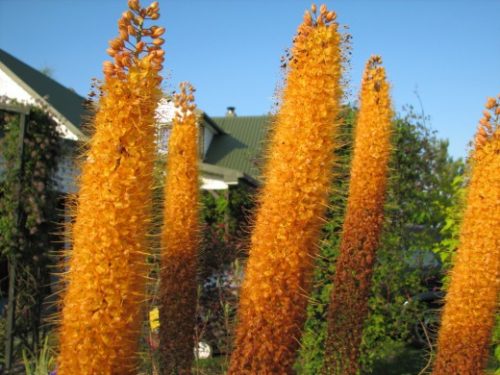
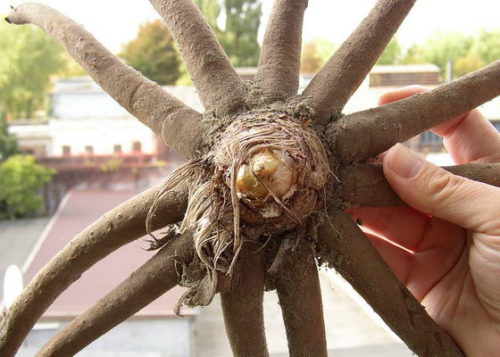

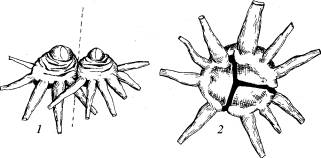
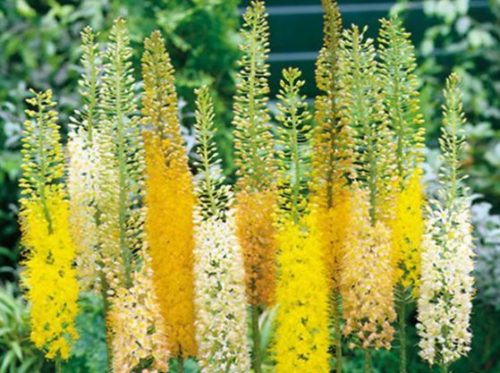
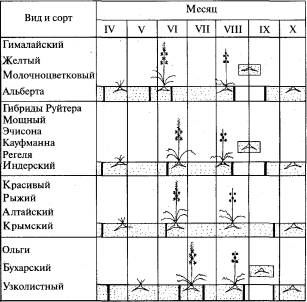
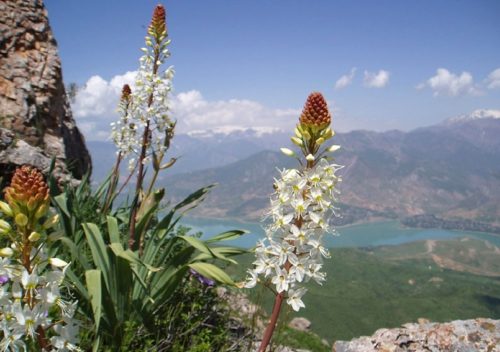
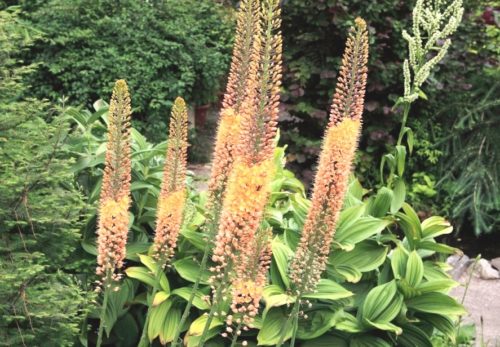
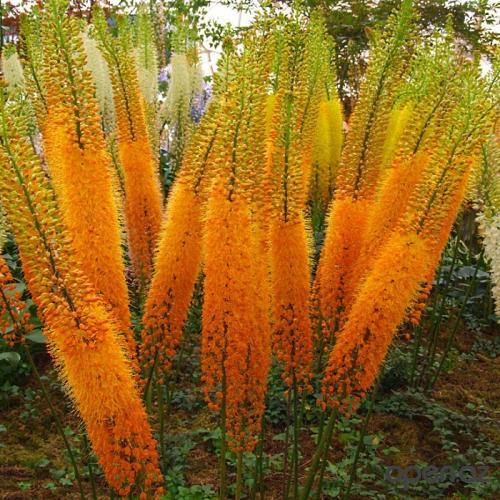
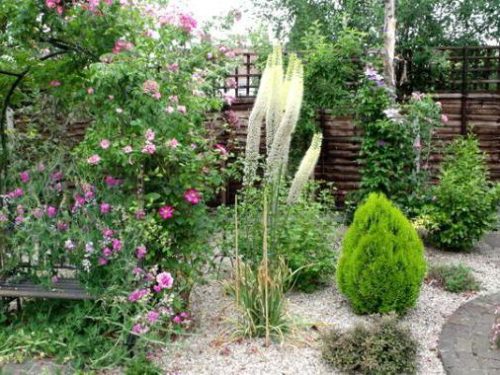
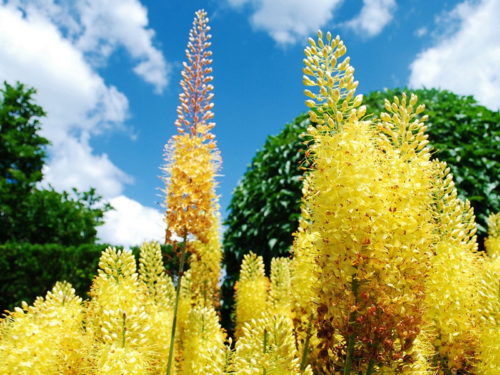

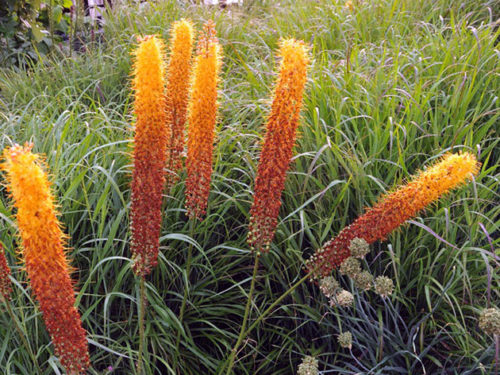
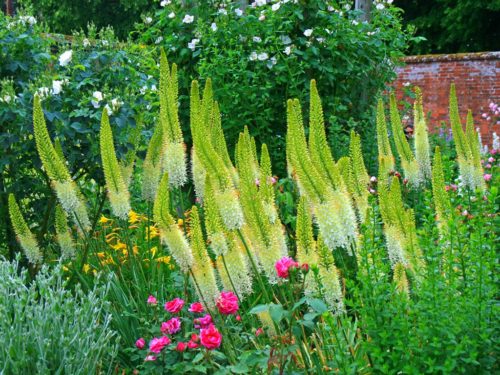
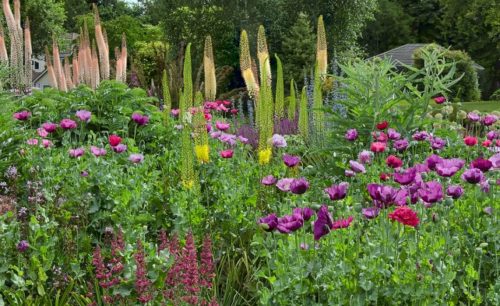












 Start a discussion ...
Start a discussion ...